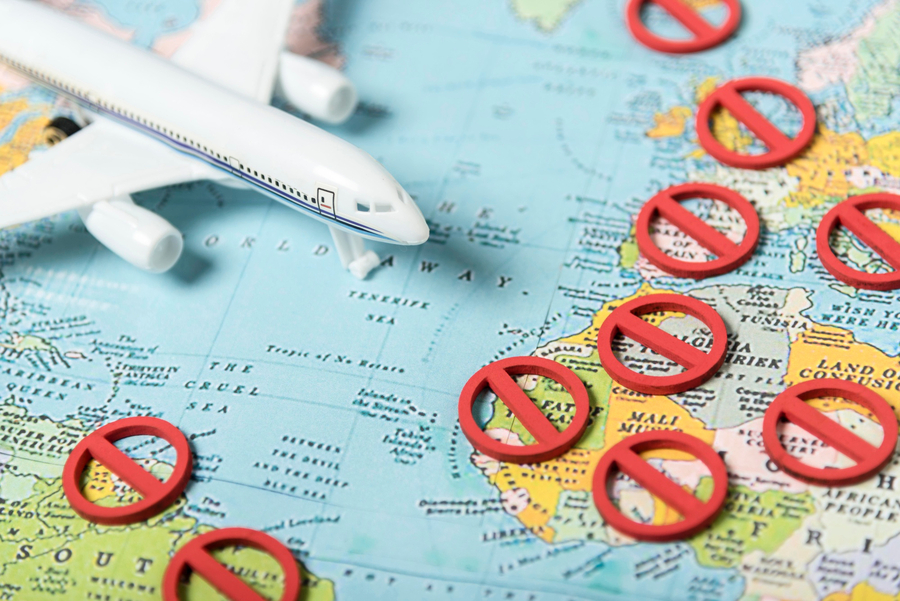Remember the old saying: a little foresight saves a lot of trouble.
Considering travel? What does a "Do Not Travel" warning really mean?

Source: Lucas Sankey/Unsplash
As of May 7, the U.S. Department of State currently designates 21 countries on its "Do Not Travel" list. This comprehensive list includes Afghanistan, Belarus, Burkina Faso, the Central African Republic, the Democratic Republic of the Congo, Haiti, Iran, Iraq, Lebanon, Libya, Mali, Myanmar, North Korea, Russia, Somalia, South Sudan, Sudan, Syria, Ukraine, Venezuela, and Yemen. Notably, both North Korea and Burkina Faso were recently added due to escalating concerns regarding wrongful detentions and heightened terrorist activity. Yet, how exactly is such a list formulated, and what should travelers genuinely glean from its warnings?
Understanding the advisory system: 4 key levels
The Department of State has been issuing its official travel advisories since 1978, as reported by National Geographic. Initially conceived to keep airlines and travel companies well-informed, the program has since evolved to become directly traveler-facing. The entire system underwent a significant overhaul in 2018, enhancing its user-friendliness and allowing all travelers to easily search for advisories and warnings by country directly on the Department of State's website.
Carrie Pasquarello, a safety strategist and CEO of Global Secure Resources Inc., explained that the system is meticulously structured into 4 distinct advisory levels, designed to assist individuals in accurately assessing potential risks. Pasquarello elaborated, "The first level is 'exercise normal precautions,' Level 2 means to 'exercise increased caution,' Level 3 is 'reconsider travel,' and Level 4 [means] 'do not travel.'" She added, "There are 9 specific risk indicators that help the State Department determine which advisory level rating a country will ultimately receive."
These influencing factors encompass a broad spectrum of concerns, from rates of crime and terrorism to the prevalence of natural disasters and instances of wrongful detention. Countries assigned a Level 1 or 2 rating undergo an annual review process, while nations at Level 3 and 4 are subject to evaluation every 6 months. Pasquarello emphasized that comprehending these inherent risks is paramount for travelers to ascertain whether visiting a particular location is truly advisable or not.
Nuance in advisory determinations
While travel advisories generally command widespread respect, experts underscore the critical importance of grasping the broader context in which these warnings are issued. Tom Abraham, cofounder of the travel planning website World Travel Index, pointed out that "too often they are diplomatic, political, or logistical limitations in disguise more than they are on-the-ground conditions for travelers."
This explains why many Level 3 and Level 4 countries frequently feature more nuanced regional distinctions. "Mexico serves as a prime example," observed John Rose, chief risk advisor at Altour (a business travel management company). He noted, "Some areas are marked as 'Do Not Travel,' while others, such as popular tourist regions, are classified as 'Exercise Normal Precautions.'"

Source: freepik/Freepik
Level 4: a warning, not a ban
Just because a country is assigned a Level 3 or Level 4 advisory doesn't imply it's absolutely off-limits for travel. "The U.S. State Department's travel advisory system is fundamentally a risk communication tool, not an absolute mandate," clarified Gene Petrino, co-owner of the security consulting business Survival Response LLC. He added, "They are broad-level assessments, not specifically tailored to individual circumstances."
Nevertheless, a Level 4 advisory should undeniably prompt serious contemplation from travelers. "Level 4 advisories should make you think twice," stated Paul Stewart, founder of overseas luggage shipping company My Baggage. He further emphasized, "Those aren't taken lightly and usually signify very serious safety concerns." Pasquarello added that one of her personal "tripwires" for deciding against a destination is the feasibility of medical evacuation if necessary. "Medical evacuation memberships are often excluded from evacuation from Level 4 and certain Level 3 destinations," she noted. This means that if you were to sustain an injury in a nation with a Level 4 warning, you might find yourself without external assistance.
"A Level 4 (Do Not Travel) advisory should be treated with the utmost seriousness. It typically indicates extreme risk due to factors like ongoing war, widespread crime, significant government instability, or a high probability of kidnapping or terrorism," Petrino asserted. As for Level 3? "It doesn't automatically mean cancel," Petrino explained, "But it certainly implies travelers should engage in thorough, case-specific planning and robust risk mitigation."
Beyond advisories: the importance of homework
All these experts universally concurred that government-issued advisories should serve merely as an initial point of reference when evaluating whether or not to journey to a specific destination.
"Astute travelers complement State Department advisories with a variety of additional information sources," Stewart advised, also recommending registration with the Smart Traveler Enrollment Program to receive real-time alerts. For Petrino, it's equally crucial to delve deeply into a destination's advisories before making a final decision to book – or indeed, to forgo – that anticipated trip.
"Security is layered," Petrino emphasized. "Most risks are manageable with the appropriate mindset and preparation. Travel advisories represent just one input... Monitor local news, engage with hotel staff, and maintain flexibility. Most importantly, trust your instincts. If something feels off, it very likely is."
Smart airport prep: lock in parking early with ParkingNearAirports.io!

Source: Claudio Schwarz/Unsplash
While researching advisories, tackle parking logistics too! Skip terminal sticker shock with affordable airport parking booked via ParkingNearAirports.io. Compare real-time rates for airport parking across secure off-site lots and reserve before you purchase to fly. Streamline your departure with one less worry!






